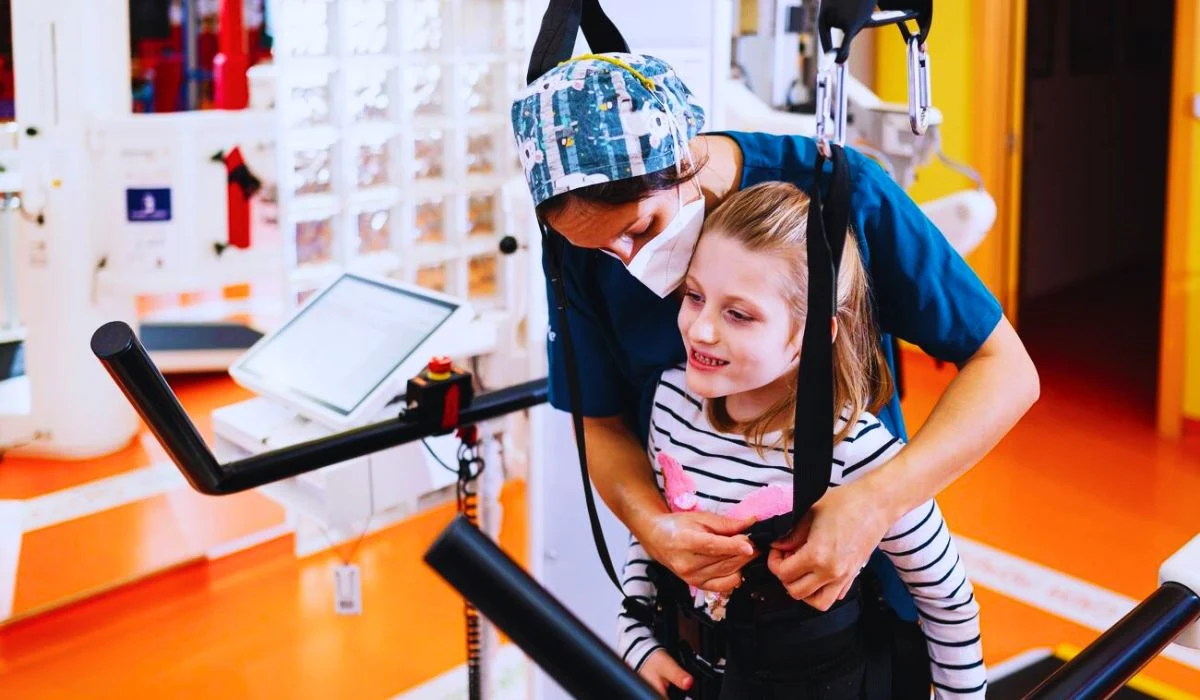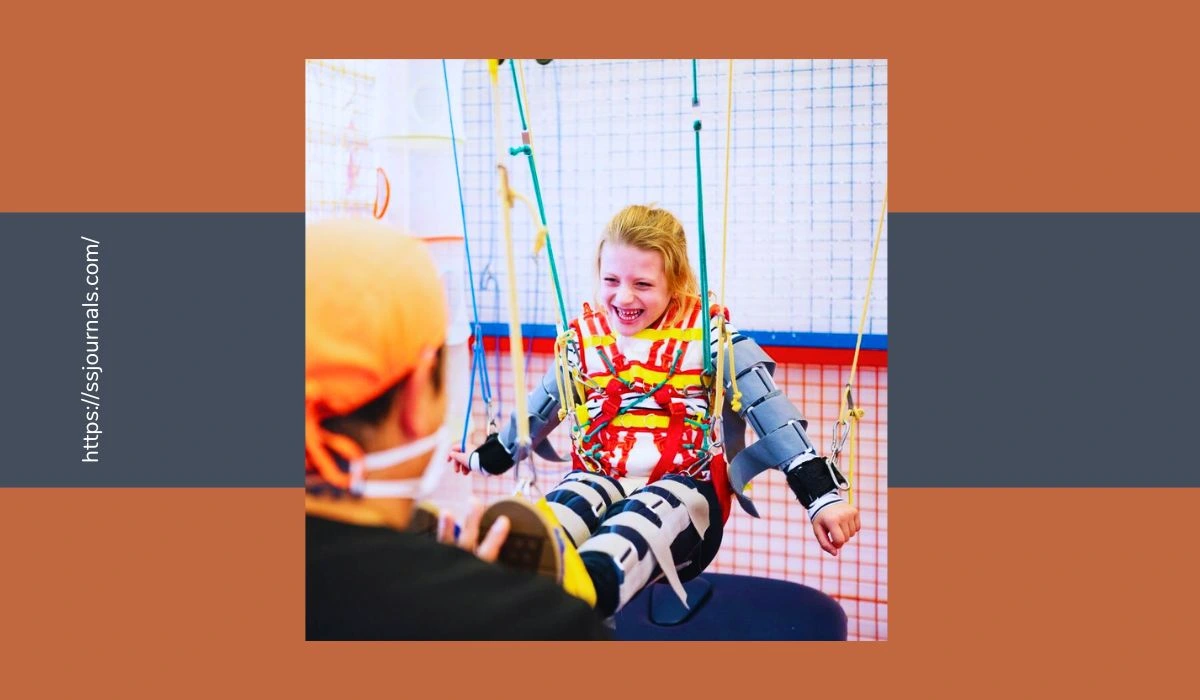Angelman syndrome is a rare genetic disorder that primarily affects the nervous system. Characterized by intellectual and developmental disabilities, difficulties with movement and balance, speech impairments, and a happy demeanor, Angelman syndrome is caused by the loss of function of a gene on chromosome 15.
While there is currently no cure, various therapies and interventions can help manage the symptoms. Understanding the signs, causes, and available treatments is key to supporting those with Angelman syndrome and their families.
Understand Angelman Syndrome Symptoms

The most common symptoms of Angelman syndrome include:
- Developmental delays: Children with Angelman syndrome are often delayed in reaching developmental milestones like sitting, crawling, and walking. Intellectual disability is universal.
- Speech impairments: Most children with Angelman syndrome have little to no speech, though some can communicate through other means like gestures or communication boards.
- Movement and balance issues: Tremors, jerky movements, and balance problems are typical. Many have a stiff-legged gait with arms raised.
- Frequent laughing and smiling: Children with Angelman syndrome tend to laugh and smile frequently, leading to a stereotype of a “happy” demeanor.
- Sleep disorders: Sleep disturbances like disrupted sleep cycles and reduced need for sleep are common.
- Seizures: Around 80% of children with Angelman syndrome experience seizures by the age of three. Seizures are often hard to control.
- Hyperactivity: Excitement and hyperactivity are common, especially in early childhood. Attention span may be short.
- Unusual behaviors: Children may engage in behaviors like hand flapping, mouthing of objects, tongue thrusting, and fascination with water.
The severity of symptoms can vary, but the disorder causes severe intellectual and developmental disabilities. Life expectancy is normal, but full-time care and supervision are required throughout life.
Also Check: Neurodegenerative Disorder – How To Overcome This Disease?
What Are Angelman Syndrome Causes?
Angelman syndrome is caused by a loss of function of the UBE3A gene on chromosome 15. This gene is involved in the nervous system and plays a role in development. There are a few ways the UBE3A gene can become nonfunctional:
🔸 Deletion
About 70-75% of Angelman syndrome cases are caused by a deletion of the maternal copy of chromosome 15. This region contains the UBE3A gene. People normally have two copies of the UBE3A gene, one from each parent. However, since the copy inherited from one’s mother is the primary active copy in certain parts of the brain, deletion of the maternal copy results in Angelman syndrome.
🔸 Mutation
Around 10% of cases are caused by a mutation or defect in the maternal copy of the UBE3A gene. This could be due to a change in the DNA sequence or abnormal gene splicing.
🔸 Paternal Uniparental Disomy
Around 7% of cases stem from two copies of chromosome 15 being inherited from the father, and none from the mother. Since the paternal UBE3A gene is normally inactive in the brain, this means there is no functional copy.
🔸 Imprinting Defect
In about 3% of cases, the maternal UBE3A gene is present but is not properly expressed or “turned on” in the brain due to an imprinting defect. This epigenetic error also leads to a nonfunctional gene.
In short, Angelman syndrome arises when the maternally inherited UBE3A gene is nonfunctional, reducing UBE3A protein levels in the brain. This alters brain development and neurological function.
Is There Any Treatment For Angelman Syndrome?

There is currently no cure for Angelman syndrome. Treatment focuses on managing symptoms and improving quality of life. Some therapies and interventions that may help include:
- Physical, occupational, and speech therapy: Therapies can help strengthen motor skills, improve balance and coordination, and develop communication skills.
- Communication aids: Devices like communication boards and computerized speech devices can augment communication. Sign language may also be helpful.
- Medications for seizures: Anticonvulsant medications help control seizures in most people with Angelman syndrome.
- Behavioral therapy: Programs based on applied behavior analysis can shape behaviors and teach new skills.
- Sleep interventions: Establishing sound sleep routines, sleep hygiene, bedroom accommodations, and medications can help with sleep issues.
- Educational support: Accommodations and personalized instruction are key for academic success. Many benefit from special education services.
- Physical aids: Braces, walkers, or wheelchairs may assist with mobility and balance issues.
While not curative, these interventions allow individuals with Angelman syndrome to develop to their full potential. With caregiver support, many enjoy participation in family, school, and community activities.
Researchers are also investigating gene therapies, drugs to unsilence the paternal UBE3A gene, and enzyme replacement to restore UBE3A protein function as potential future treatments. For now, supportive medical care and therapy remain the standard.
Read More: Causes Of Meningitis In Adults: Stay Informed And Protect Yourself
Conclusion
Angelman syndrome is a debilitating neurological disorder caused by loss of gene function on the maternally inherited chromosome 15. Characterized by developmental delays, movement disorders, minimal speech, seizures, and other symptoms, it requires life-long care but does not impact life expectancy.
While there is no cure yet, various therapies can help manage symptoms and improve quality of life. Increased awareness and research funding bring hope for targeted treatments in the future. With proper support, those with Angelman syndrome can find connection and enjoyment in life.
FAQs
A: The first signs of Angelman syndrome usually appear in early childhood between 6-12 months. Early indicators include delayed milestones like not sitting by 8 months and not walking by 2 years old. Other early signs include reduced sleep needs, feeding issues, stiff or jerky movements, and absence of speech development.
A: The life expectancy for individuals with Angelman syndrome is normal. With proper care and management of issues like seizures, movement disorders, and sleep disturbances, most people with Angelman syndrome have a typical lifespan.
A: Angelman syndrome is not inherited in a dominant pattern where someone would be a classic carrier. However, both parents have to carry the intact UBE3A gene for a child to develop Angelman syndrome. It arises from an error during reproduction, not within the parents’ genes.
A: There are no distinct types of Angelman syndrome, but there are different genetic causes – maternal 15q deletion, paternal UPD, imprinting defects, or UBE3A mutations. The symptoms and features are generally consistent regardless of the underlying genetic mechanism. However, imprinting defects may lead to a slightly milder presentation.
A: There is no single specialist for Angelman syndrome, but a multidisciplinary team is ideal. This may include pediatricians, neurologists, geneticists, orthopedists, physical therapists, occupational therapists, speech pathologists, psychologists, and developmental pediatricians. Epileptologists often help manage seizures associated with the disorder.

